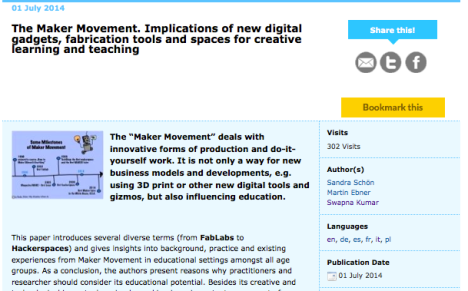Our contribuation to this year ED-Media 2021 conference about “Making of an Open Makerspace in a Secondary Vocational School in Austria: Development, Activities, User Behaviour and Gender Balance” got published. The slides are already here online.
Abstract:
This research shows the development process of an open makerspace on the premises of a higher secondary vocational school (HTL) in Austria from 2017 till today. It illustrates the need for this space, the acquisition of initial funding and the legal framework. User policy and machinery are presented, as well as safety and security systems. An insight on the organizational structure is given. We present regular dedicated maker classes and curricular integration of the makerspace for K-12 students. Makerspace activities like maker challenges and holiday camps for divergent participants like primary school children and girls are discussed and the role of females in engineering education and makerspaces is reviewed. Qualitative observations of different stakeholders are reproduced and supplemented by statistical data. We also show setbacks and difficulties due to the Corona crisis and give an overview of future maker initiatives.
[draft @ ResearchGate]
[final publication @ lerntechlib]
Reference: Sagbauer, N.N., Stocker, K., Pollak, M. & Ebner, M. (2021). Making of an Open Makerspace in a Secondary Vocational School in Austria: Development, Activities, User Behaviour and Gender Balance. In T. Bastiaens (Ed.), Proceedings of EdMedia + Innovate Learning (pp. 467-479). United States: Association for the Advancement of Computing in Education (AACE). Retrieved August 1, 2021 from https://www.learntechlib.org/primary/p/219695/.

